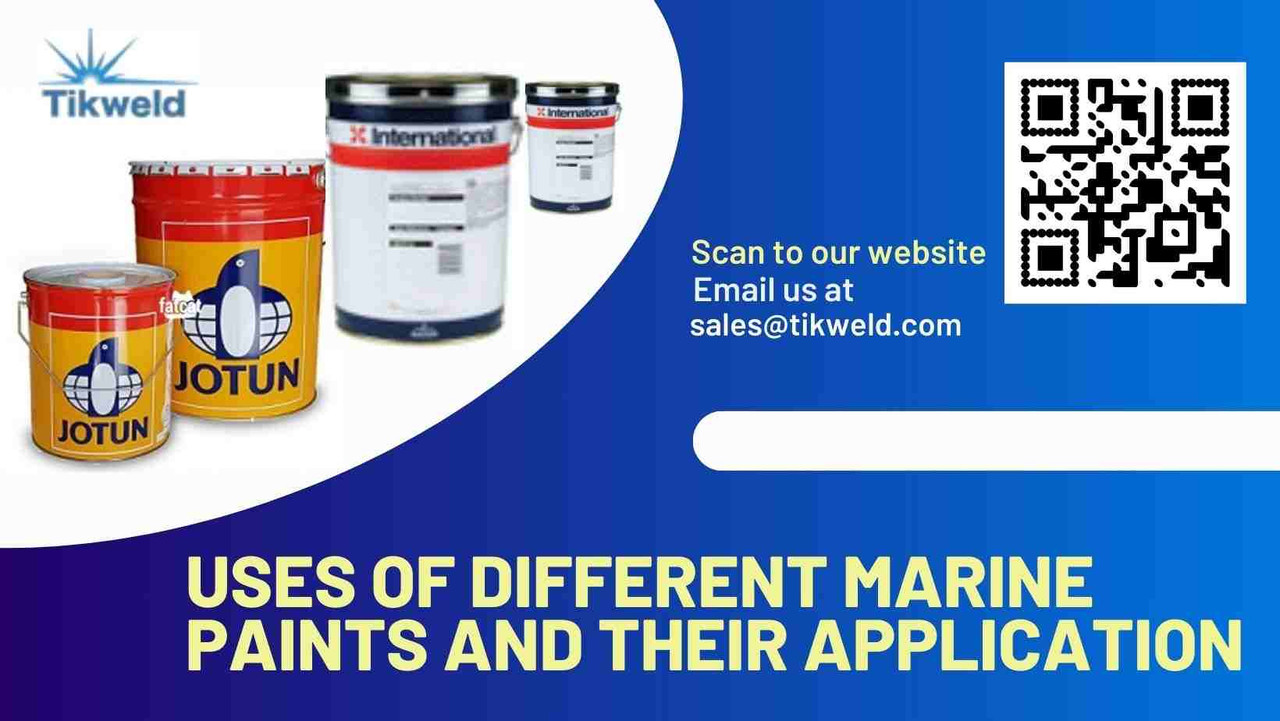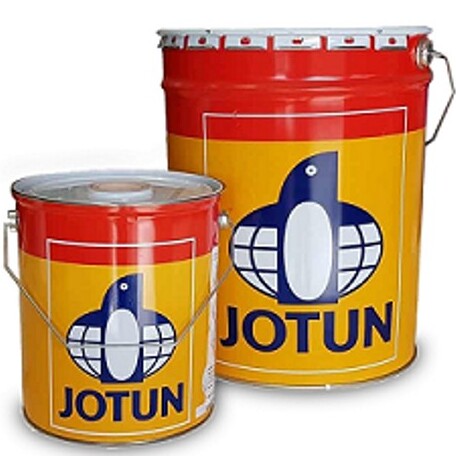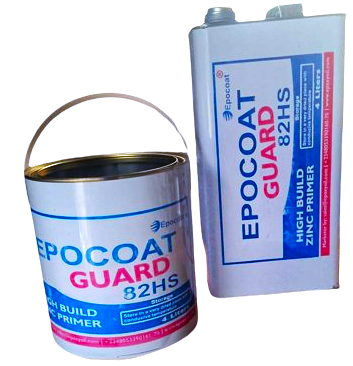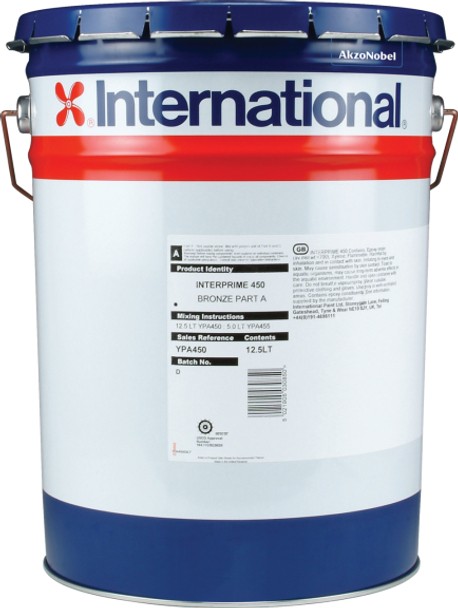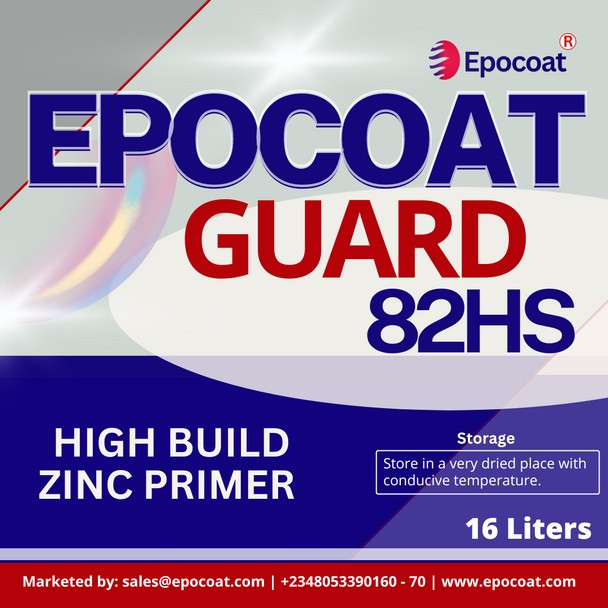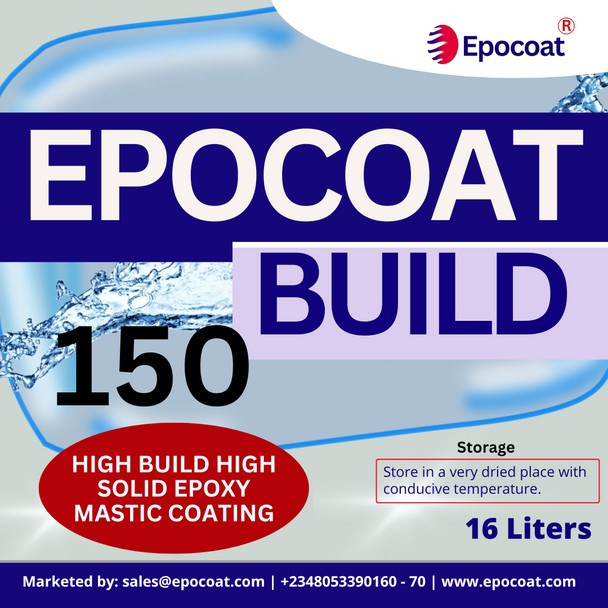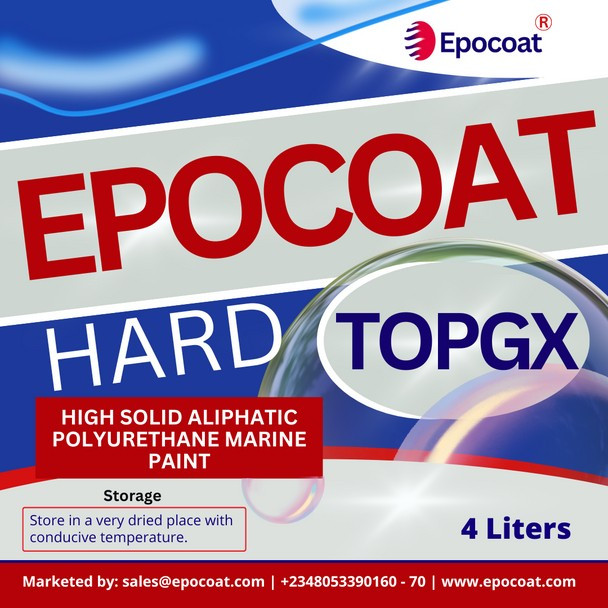Uses of Different Marine Paints and Their Application
Key takeaway
One marine paint type is the Epoxy primers such as Epocoat Guard 82 HS, a high-performance two-component zinc-rich epoxy primer specifically designed for the protection of steel in highly aggressive environments such as onshore and offshore structures, platforms, pipelines, refineries, petrochemical plants, and bridges. This primer, containing approximately 92% zinc dust dry film, offers superior anti-corrosive properties, making it an excellent choice for new construction or major repair projects on bare steel.
Introduction
Marine paints play a crucial role in protecting metal and steel structures exposed to harsh marine environments. They offer a range of benefits, from preventing corrosion to enhancing aesthetic appeal, thereby extending the life and functionality of vessels and offshore structures.
There are several types of marine paints, each serving a unique purpose. Antifouling paints prevent the growth of marine organisms like barnacles and algae on hulls, reducing drag and improving fuel efficiency. Topside paints are used above the waterline on decks and superstructures, providing aesthetic appeal and protection against UV rays. Deck paints offer slip resistance and durability in high-traffic areas. Bilge paints are applied to the bilge area, offering resistance to oil, water, and chemicals. Epoxy primers provide a strong, corrosion-resistant base coat that enhances the adhesion and durability of subsequent paint layers. Barrier coats serve as a protective layer to prevent water absorption and blistering on fiberglass hulls. Each type of marine paint is formulated to address specific challenges, ensuring optimal performance and longevity of marine vessels and structures.
Jotun marine paint hardtop clear AS
Types of Marine Paints
1. Antifouling Paints
Antifouling paints are specifically formulated to prevent biofouling—the accumulation of marine organisms such as barnacles, algae, and mollusks on submerged surfaces. These paints release biocides that deter organisms from adhering to the hull. They are essential for maintaining a vessel’s speed and fuel efficiency.
Typical Application Areas: Hulls, keels.
Benefits: Prevents drag, reduces maintenance costs, improves fuel efficiency.
2. Topside Paints
Topside paints are used above the waterline to protect and beautify the exterior surfaces of a vessel. These paints are formulated to withstand UV radiation, saltwater, and general wear and tear.
Typical Application Areas: Above the waterline, decks, superstructures.
Benefits: UV resistance, aesthetic appeal, protection against weather elements.
3. Deck Paints
Deck paints are designed to provide a non-slip surface while withstanding heavy foot traffic and exposure to harsh conditions. They often include additives to enhance traction and durability.
Typical Application Areas: Deck surfaces, walkways.
Benefits: Non-slip properties, durability, resistance to abrasion and chemicals.
4. Bilge Paints
Bilge paints are formulated to resist oil, water, and other contaminants commonly found in the bilge areas of a vessel. These paints are easy to clean and provide a protective barrier against corrosion.
Typical Application Areas: Bilge areas, engine rooms.
Benefits: Oil and water resistance, easy cleaning, prevents corrosion.
5. Epoxy Primers
Epoxy primers are essential for providing a strong adhesive base for subsequent paint layers. They offer excellent corrosion resistance and are ideal for use on metal surfaces.
Example: Epocoat Guard 82 HS (High Build Zinc Primer)
Features: High-performance zinc-rich anti-corrosive primer, 92% zinc dust dry film, complies with SSPC paint 20 level.
Benefits: Corrosion resistance in marine and saline atmospheres, suitable for aggressive environments, dries at temperatures down to -10 degrees.
Typical Application Areas: Onshore and offshore structures, platforms, pipelines, refineries, petrochemical plants, bridges.
6. Barrier Coats
Barrier coats provide a moisture-resistant layer that prevents blistering and other moisture-related damage. They are often used below the waterline to enhance the durability of antifouling paints.
Typical Application Areas: Below the waterline, between hull and antifouling paint.
Benefits: Prevents blistering, acts as a moisture barrier, prolongs the life of the paint system.
EPOCOAT GUARD 82 HS (HIGH BUILD ZINC PRIMER)
Application Techniques
1. Surface Preparation
Proper surface preparation is critical to the success of any painting project. This involves cleaning, sanding, and priming the surface to ensure optimal adhesion and durability of the paint.
Steps:
Cleaning: Remove dirt, grease, and loose material.
Sanding: Smooth out any rough areas and create a suitable surface profile.
Priming: Apply a primer to enhance adhesion and provide a protective layer.
2. Application Methods
Different application methods can be used depending on the type of paint and the surface being coated.
Brush and Roller Techniques
When to Use: Ideal for small areas or detailed work.
Advantages: Easy to control, minimal equipment required.
Disadvantages: Slower application, potential for brush marks.
3. Spray Techniques
Equipment Needed: Airless spray equipment, compressor.
Best Practices: Ensure even application, use proper pressure settings, maintain appropriate distance from the surface.
Example: Epocoat Build 150 (High Build High Solid Epoxy Mastic Coating)
Features: Surface tolerant, high build, high solid product.
Benefits: High corrosion resistance, can be used as a primer, midcoat, or finish coat.
Typical Application Areas: Coastal and industrial polluted environments.
4. Drying and Curing Times
Adhering to manufacturer guidelines for drying and curing times is crucial for achieving the desired performance and longevity of the paint. Factors such as temperature, humidity, and ventilation can affect these times.
Maintenance and Longevity
Regular maintenance is key to prolonging the life of marine paints. This includes routine inspections, cleaning, and touch-ups to address minor damages before they become significant issues.
Cleaning Techniques: Use gentle, non-abrasive cleaners to remove dirt and grime without damaging the paint.
Inspection Routine: Check for signs of wear, rust, and peeling paint, and address these issues promptly.
Identifying Signs of Wear and Damage: Recognizing the early signs of paint degradation can help prevent more extensive damage. Common signs include blistering, peeling, fading, and rust spots.
Steps to Repair:
Remove Damaged Paint: Sand or scrape away any loose or damaged paint.
Clean the Surface: Ensure the area is clean and dry before applying new paint.
Reapply Paint: Follow proper application techniques to ensure a seamless repair.
Environmental Impact on Paint Longevity
Environmental factors such as saltwater, UV exposure, and temperature fluctuations can significantly impact the longevity of marine paints.
Mitigation Strategies: Use high-quality, durable paints designed for marine environments, and apply protective coatings as necessary.
International Paint Interbond 201 20L
Safety and Environmental Considerations
Safety should always be a priority when handling and applying marine paints. This includes using personal protective equipment (PPE) such as gloves, masks, and protective clothing, and ensuring proper ventilation.
Ventilation: Use fans and open windows to ensure adequate airflow.
PPE: Gloves, masks, safety glasses, and protective clothing.
Environmental Impact
The environmental impact of marine paints is a growing concern. Regulations governing the use of certain chemicals and biocides are becoming stricter, and there is an increasing demand for eco-friendly options.
Eco-Friendly Paints: Look for paints that are biocide-free and have lower volatile organic compound (VOC) levels.
Regulations: Stay informed about local and international regulations regarding marine paints.
Example: Epocoat Hard Top GX (High Solid Aliphatic Polyurethane Marine Paint)
Features: Outstanding exterior weather resistance, excellent color gloss retention, non-chalking, non-yellowing.
Benefits: Suitable for a wide range of environments, including marine structures and heavy industrial facilities.
Typical Application Areas: Topside, deck, superstructure, offshore environments, refineries, power plants, bridges, buildings.
Technological Advances and Research
Innovations in marine paint technology are continually improving the performance and environmental impact of these products. Examples include nano-coatings and self-healing paints.
Nano-Coatings: Provide superior protection through extremely thin layers.
Self-Healing Paints: Automatically repair minor scratches and damages.
Product Reviews and Comparisons
When it comes to selecting the right marine paint, understanding the features, benefits, and applications of different products is crucial. Here, we provide comprehensive reviews of four popular marine paints: Epocoat Guard 82 HS, Epocoat Build 150, Epocoat Hard Top GX, and Epocoat Alkyd Gloss.

1. Epocoat Guard 82 HS (High Build Zinc Primer)
Epocoat Guard 82 HS is a two-component zinc-rich epoxy primer designed for high-performance anti-corrosive protection in aggressive environments. Ideal for use on steel structures such as offshore platforms, pipelines, refineries, and bridges, this primer offers excellent protection against corrosion.
Features:
- High Zinc Content: Contains approximately 92% zinc dust in the dry film, ensuring robust anti-corrosive properties.
- Compliance: Meets SSPC Paint 20 standards, confirming its quality and reliability.
- Versatile Application: Suitable as a primer for new constructions, major repairs, and field maintenance over bare steel or coated surfaces.
- Temperature Resistant: Effective even in temperatures as low as -10 degrees Celsius.
- Corrosion Resistance: Provides strong protection in marine and saline environments.
Benefits:
- Durability: Ensures long-lasting protection against corrosion, extending the life of steel structures.
- Flexibility: Can be used in various applications, from new constructions to maintenance projects.
- Performance: High zinc content and compliance with industry standards ensure top-tier performance.
2. Epocoat Build 150 (High Build High Solid Epoxy Mastic Coating)
Epocoat Build 150 is a two-component, high-build, high-solid epoxy mastic coating pigmented with glass flake. This surface-tolerant coating is designed for areas where optimal surface preparation is challenging, making it suitable for both new and maintenance applications.
Features:
- High Solid Content: Ensures a thick, protective layer with each application.
- Surface Tolerance: Can be applied over less-than-ideal surfaces, making it versatile and user-friendly.
- Corrosion Resistance: Excellent protection against corrosion, ideal for coastal and industrial environments.
- Multi-Use: Can serve as a primer, midcoat, finish coat, or single-coat system.
Benefits:
- Adaptability: Suitable for various environments and surface conditions, reducing the need for extensive surface preparation.
- Protection: High resistance to humidity, moisture, and industrial pollutants.
- Versatility: Can be used in different roles within a coating system, providing flexibility for various projects.
Technical Specifications:
- Application Methods: Airless spray equipment, brush, or roller for small areas.
- Thinner Type: Thinner 100, with a ratio of 5 to 10% by volume.
- Temperature and Humidity: Optimal air temperature is 50°C, surface temperature 60°C, and humidity below 85%.
- Pot Life: 1-2 hours.
- Dry Time: Touch dry in 30 minutes at 30°C, with a full cure period of 7 days.
3. Epocoat Hard Top GX (High Solid Aliphatic Polyurethane Marine Paint)
Epocoat Hard Top GX is a two-component aliphatic polyurethane coating known for its outstanding exterior weather resistance and excellent color and gloss retention. It is suitable for a wide range of applications, including topside, deck, superstructure, and various industrial structures.
Features:
- Gloss Finish: Provides a high-gloss, aesthetically pleasing finish.
- Weather Resistance: Outstanding resistance to weathering, including UV exposure, non-chalking, and non-yellowing properties.
- Chemical Resistance: Resistant to splashes of mineral and vegetable oils, paraffins, aliphatic petroleum products, and mild chemicals.
- Application Flexibility: Can be applied using airless spray equipment, brush, or roller.
Benefits:
- Durability: Long-lasting protection and aesthetic appeal in harsh marine environments.
- Versatility: Suitable for a wide range of industrial and marine applications, providing comprehensive protection.
- Ease of Maintenance: Gloss topcoat properties with good application characteristics make maintenance simpler.
Technical Specifications:
- Application Methods: Airless spray equipment, brush, or roller for small areas.
- Thinner Type: Thinner 100, with a ratio of 5 to 10% by volume.
- Temperature and Humidity: Optimal air temperature is 50°C, surface temperature 60°C, and humidity below 85%.
- Pot Life: 3-5 hours.
- Dry Time: Touch dry in 1 hour at 30°C, with a full cure period of 7 days.
4. Epocoat Alkyd Gloss
Epocoat Alkyd Gloss is a one-component premium quality full gloss paint formulated with high solids alkyd resin. It is suitable for both interior and exterior surfaces, providing a high-gloss finish with good retention and heat resistance.
Features:
- High Gloss Finish: Ensures a shiny, reflective surface that enhances visual appeal.
- Good Gloss Retention: Maintains its gloss over time, resisting dullness.
- Heat Resistance: Can withstand temperatures above 100°C.
- Versatile Application: Suitable for offshore and industrial use, including engines, topsides, decks, superstructures, and general structural steel.
Benefits:
- Aesthetic Appeal: Provides a high-gloss finish that is both attractive and durable.
- Durability: Resistant to heat and environmental factors, ensuring a long-lasting finish.
- Versatility: Can be applied over existing alkyd, epoxy, and polyurethane coatings, making it ideal for both new builds and maintenance projects.
Technical Specifications:
- Dry Time: Surface dry in 4 hours, hard dry in 24 hours.
- Gloss Level: Above 65 units at 20° gloss angle.
- Heat Resistance: Withstands temperatures above 100°C.
Industry Standards and Certifications
Compliance with industry standards and certifications ensures the reliability and safety of marine paints. Familiarize yourself with key standards and certification bodies.
IMO: International Maritime Organization standards for marine paints. and protective coatings
EPA: Environmental Protection Agency regulations on marine coatings
ISO: International Organization for Standardization guidelines for quality marine paints
Role of Regulatory Bodies
Regulatory bodies play a significant role in establishing and enforcing standards for marine paints. Understanding their requirements can help in selecting compliant and high-quality products.
Compliance: Ensuring adherence to regulatory guidelines for environmental protection and safety.
FAQs and Common Concerns
1. How long does marine paint last?
The lifespan of marine paint depends on the type of paint, environmental conditions, and maintenance. Typically, high-quality marine paints can last between 5 to 10 years with proper care.
2. Can I apply marine paint myself?
Yes, DIY application is possible, but it requires proper surface preparation and adherence to application guidelines. For best results, consider professional application for larger projects.
3. What is the best way to remove old marine paint?
Sandblasting, scraping, or using chemical paint removers are effective methods. Always follow safety guidelines and manufacturer recommendations.
4. Is marine paint environmentally friendly?
Many modern marine paints are formulated to be environmentally friendly, with low VOC content and biocide-free options. Check the product label for eco-friendly certifications.
5. How can I prevent marine paint from peeling?
Answer: Proper surface preparation, including cleaning and priming, is essential. Follow the manufacturer's instructions for application and curing times to ensure a strong bond.
Conclusion
Marine paints are essential for protecting metal and steel structures in harsh marine environments. By understanding the different types of marine paints, their applications, and best practices for maintenance, you can ensure the longevity and performance of your vessels and offshore structures.
Discover our range of premium marine paints at Tikweld Product and Services. Whether you need antifouling paint, epoxy primers, or high-build coatings, we have the right products to meet your needs. Explore our offerings and ensure the best protection for your marine assets. Visit Tikweld Product and Services for all marine paint and coatings today!

